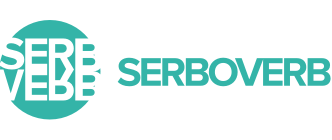Serbian verbs change their forms. This change follows certain criteria and it is called conjugation or verbal inflection. In this post you will find the main features that affect the formation of Serbian verb forms.
When conjugated, the verb is the main element of a sentence. Its typical purpose is to situate an action, process or state in time, and to provide information on the subject of that action, process or state.
Each Serbian verb form can carry some of the following information:
• person: whether the subject of the verb is the speaker, the interlocutor, or the person or thing spoken about.
• number: whether the verb is in the singular or the plural, e.g. whether the subject is the ‘I’ form or the ‘we’ form.
• gender: whether the verb is in the masculine, the feminine or the neuter form. • tense: whether the verb indicates the present, past or future.
• mood: whether the verb expresses a statement, a command, a hypothesis or a possibility.
• voice: whether the verb indicates that the subject performs or undergoes the action.
• affirmation or negation.
All Serbian verbs are marked for aspect (whether the verb indicates that duration of a state, action or process is bounded or not).


Leave a Reply
Want to join the discussion?Feel free to contribute!